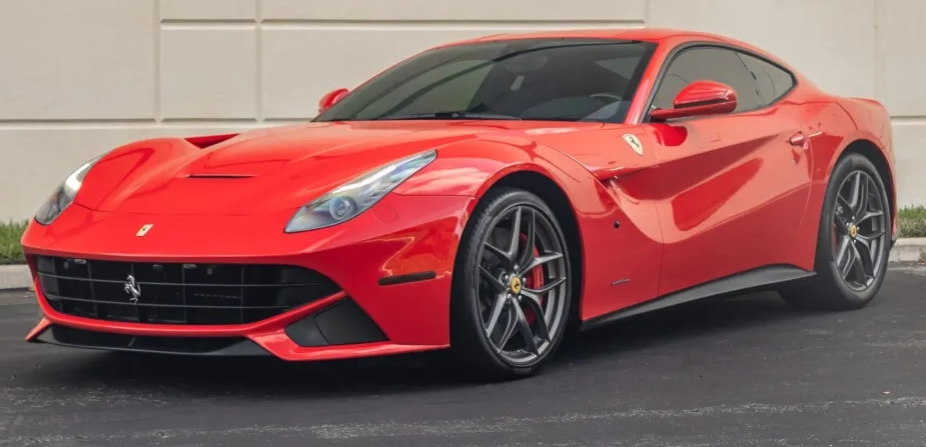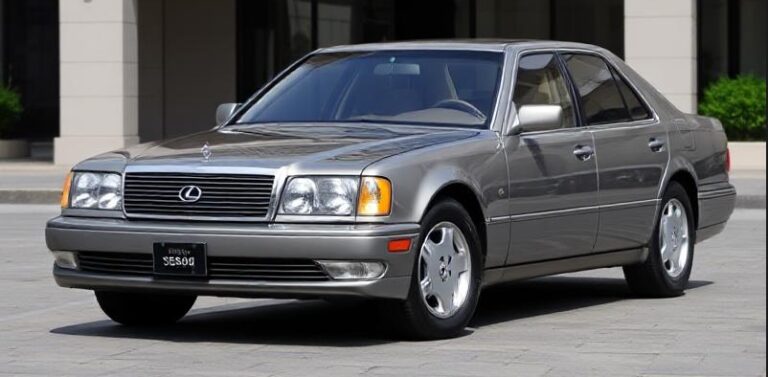Apex Predator: The Evolution of the Ferrari F12
The heart of Ferrari has always beaten to the rhythm of twelve cylinders. For decades, the marque’s front-engined V12 Grand Tourers have represented the pinnacle of performance, luxury, and soul-stirring drama. They are the flagships, the ultimate expression of the Prancing Horse ethos. In 2012, this lineage entered a new, ferociously modern era with the unveiling of the Ferrari F12berlinetta, a car that not only succeeded the already formidable 599 GTB Fiorano but redefined the very concept of the “super GT.” The F12 platform would prove to be more than just a single model; it was a canvas for engineering brilliance, culminating in one of the most revered and sought-after V12 Ferraris of the modern age. This is the story of its evolution.
The New Benchmark: The F12berlinetta (2012–2017)
Unveiled at the 2012 Geneva Motor Show, the F12berlinetta arrived with a clear statement of intent. Its name, a simple and elegant combination of its engine configuration (F for Ferrari, 12 for cylinders) and its body style (berlinetta, or “little saloon”), belied the sheer ferocity lurking beneath its skin.
The Powertrain: A V12 Masterpiece
At its core was the F140 FC engine, a new evolution of Ferrari’s 65-degree V12. Displacing 6,262 cc (6.3 litres), this naturally aspirated powerplant was a technical tour de force. It produced a staggering 740 PS (730 horsepower) at 8,250 rpm and 690 Nm (509 lb-ft) of torque, with 80% available from just 2,500 rpm. At its launch, this made the F12berlinetta the most powerful series-production, road-going Ferrari ever built. The engine was a symphony of mechanical fury, capable of revving to a spine-tingling 8,700 rpm redline.
Power was sent to the rear wheels exclusively through a seven-speed F1 dual-clutch transmission. The gearbox was tuned for lightning-fast shifts but also offered a surprising degree of civility in its automatic mode, reinforcing the car’s dual personality as both a continent-crushing GT and a track-day weapon. Performance figures were biblical for the time: 0-100 km/h (0-62 mph) in 3.1 seconds, 0-200 km/h (0-124 mph) in 8.5 seconds, and a top speed in excess of 340 km/h (211 mph).
Design and Aerodynamics: The Aero Bridge
Styled by the Ferrari Styling Centre in collaboration with Pininfarina, the F12’s design was a masterful blend of aggression and elegance. It was shorter, lower, and narrower than its 599 predecessor, with a taut, muscular stance. The design, however, was dictated as much by the wind tunnel as by the artist’s pen.
The F12’s most innovative feature was the “Aero Bridge.” This was not merely a stylistic flourish on the front fenders but a functional aerodynamic channel. Air was directed from the bonnet, through ducts, and over the bridge along the car’s flanks. This clever solution created downforce by reducing pressure over the upper body, effectively “sucking” the car to the road without the need for large, disruptive wings. Further aerodynamic aids included Active Brake Cooling ducts, which opened to channel air to the massive carbon-ceramic brakes only when they reached high operating temperatures, reducing drag when cooling was not needed. The result was a car that produced 123 kg of downforce at 200 km/h, a 76% improvement over the 599, with a remarkable drag coefficient of just 0.299.
Chassis and Dynamics
The F12 was built around an all-new aluminum space-frame chassis, utilizing 12 different alloys to increase structural rigidity by 20% while reducing weight compared to the 599. The engine, gearbox, and driver’s seat were all positioned lower and further back, achieving an ideal weight distribution of 46% front and 54% rear.
It was equipped with the latest generation of Ferrari’s dynamic control systems, including the E-Diff (electronic differential), F1-Trac (traction control), and SCM-E magnetorheological suspension. The manettino dial on the steering wheel allowed the driver to cycle through settings (Wet, Sport, Race, CT Off, ESC Off), transforming the car from a comfortable GT to a sharp-edged supercar at the flick of a switch. Critics lauded the F12berlinetta for its mind-bending performance and accessibility. It was brutally fast yet possessed a level of chassis composure and steering feedback that made its immense power surprisingly manageable.
The Ultimate Expression: The F12tdf (2015–2017)
As the F12berlinetta’s production cycle matured, Ferrari prepared its final, definitive statement. In October 2015, the company unveiled the F12tdf. The “tdf” moniker was a tribute to the legendary Tour de France Automobile endurance race, a grueling event Ferrari dominated in the 1950s and 60s with cars like the 250 GT Berlinetta. This was not merely a power upgrade; it was a complete re-engineering of the F12 platform, designed to deliver an uncompromising, track-focused driving experience.
Power and Performance Unleashed
The 6.3-litre V12 was overhauled, incorporating technology from the XX Programme track cars. Solid mechanical tappets replaced the hydraulic ones, and the engine was fitted with variable-geometry intake trumpets derived from Formula 1. These changes pushed power up to 780 PS (769 horsepower) at 8,500 rpm and torque to 705 Nm (520 lb-ft). The dual-clutch gearbox was also recalibrated for 30% faster upshifts and 40% faster downshifts. The F12tdf would rocket from 0-100 km/h in a blistering 2.9 seconds.
Chassis Dynamics: The Virtual Short Wheelbase
The tdf’s most significant innovation was the introduction of Passo Corto Virtuale, or Virtual Short Wheelbase. This was Ferrari’s first application of an active rear-wheel steering system on a road car. The system could steer the rear wheels by up to one degree, turning them in the opposite direction of the front wheels at lower speeds to dramatically increase agility and turn-in response, effectively “shortening” the wheelbase. At high speeds, the rear wheels would turn in the same direction as the front, enhancing stability. This technology tamed the car’s inherent tendency for power-on oversteer, making its extreme performance more exploitable.
Aggressive Aerodynamics and Weight Reduction
The F12tdf was a visual departure from the Berlinetta. Every surface was honed for aerodynamic efficiency. A more aggressive front splitter, dive planes, fender louvres, a larger rear spoiler, and a completely redesigned rear diffuser combined to generate 230 kg of downforce at 200 km/h—an 87% improvement over the standard F12.
Weight was relentlessly stripped out. Carbon fibre was used for the front and rear bumpers, door panels, and interior trim. The cabin was spartan, with Alcantara replacing leather, carbon fibre shells for the seats, and the glovebox deleted. Even the carpets were replaced with patterned aluminum floor plates. In total, the F12tdf shed 110 kg (243 lbs) compared to the Berlinetta.
Limited to just 799 examples, the F12tdf was an instant legend. It was a raw, demanding, and exhilarating machine—a savage, untamed beast that rewarded skilled drivers with one of the most intense analogue driving experiences of the 21st century.
Bespoke Masterpieces: The Special Projects and One-Offs
The F12’s superb underpinnings made it the perfect foundation for Ferrari’s ultra-exclusive “Special Projects” division, which creates unique, one-off cars for its most valued clients.
Ferrari F12 TRS (2014): A stunning open-top barchetta inspired by the 1957 250 Testa Rossa. It featured a unique glass panel in the bonnet offering a view of the V12’s red cylinder heads and a radically sculpted rear deck. At least two were built for the same client.
Ferrari SP America (2014): A one-off coupe with bespoke bodywork reminiscent of the iconic 250 GTO, including three distinctive hood vents and a prominent rear spoiler.
Ferrari F60 America (2014): Created to celebrate 60 years of Ferrari in North America, this was a limited run of just 10 cars. It was an open-top roadster with unique bodywork, a light fabric roof, and a patriotic blue livery with a central white stripe, evoking the historic North American Racing Team (NART) colours.
Ferrari SP275 RW Competizione (2016): Based on the more potent F12tdf chassis, this one-off creation paid homage to the 275 GTB/C. It featured unique GTO-style vents on its fenders, a bespoke body, and a special yellow paint scheme.
.
You’ve got that cool car, but is it resting in its own cool place?
It’s visually pleasing for the surrounding areas outside of your home to look as awesome as what’s stored inside your garage! If you desire a truly inspirational environment, you should check into these plans!

.
Legacy: The End of an Era
In 2017, the Ferrari F12 lineage made way for its successor, the 812 Superfast. The 812 built directly upon the F12’s legacy, increasing the V12’s displacement to 6.5 litres, refining the rear-wheel steering system, and introducing electric power steering.
Yet, the F12 holds a special place in Ferrari history. The F12berlinetta was a watershed moment, a car that perfectly balanced breathtaking performance with genuine grand touring capability. The F12tdf, meanwhile, stands as a high-water mark for the purely naturally aspirated, non-hybrid V12 Ferrari—a visceral, challenging, and profoundly rewarding machine that represents the zenith of a certain kind of automotive engineering. More than just a car, the F12 was a definitive chapter in the story of the V12, an apex predator that set the standard for a generation and will be remembered as one of Maranello’s all-time greats.







